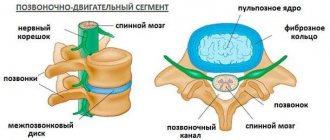Capgras syndrome is a disorder in which a person actively develops and propagates the delusion that a friend, spouse, parent, other family member, or even an animal has been replaced by an identical entity, essentially an impostor. Capgras syndrome is classified as a delusional disorder that involves misidentification of people, places, or objects. Pathology can develop in an acute, transitional or chronic form. There are no cases of patients being convinced that time has been “deformed” or “replaced”.
Such misconceptions typically develop in patients diagnosed with paranoid schizophrenia, but also occur in patients with traumatic brain injury and dementia. In addition, the syndrome often occurs in individuals with neurodegenerative diseases, particularly at older ages. Medicine has data on the relationship of the disorder with diabetes mellitus, hypothyroidism and migraine attacks. Capgras syndrome is more common in women in a 3:2 ratio.
The information collected in the study of people with Capgras syndrome has only theoretical significance for understanding the essence of perception and neuroanatomy in healthy and unhealthy individuals.
general information
Capgras syndrome is also called negative twin syndrome. According to medical encyclopedias, this is a mental disorder in which the patient mistakes strangers for his family and friends. It also happens the other way around - he considers strangers to be relatives. In some cases, a person thinks that he himself has also been replaced by a double.
For clarity, here are examples from life:
- A certain Mrs. D, a 74-year-old housewife, believed that her husband had been replaced by a completely stranger. She did not want to sleep in the same room with him, closed the doors to herself and even asked her son to bring her a pistol to protect her from the stranger. The woman also started a fight with a policeman who wanted to take her to the hospital. This only happened to my husband. Mrs. D. perceived other family members adequately.
- One of the patients with Capgras syndrome convinced others that it was not he who was committing illegal actions, but his twin brother. He lived abroad and then came. And now he is trying to recruit the patient. Outwardly, he is no different. The only difference is in behavior. The man gave the example of a broken window. According to him, he himself was in a completely different place at that moment.
- For 10 years Madame M. believed that everyone around her, including her husband, daughter, and neighbors, had been replaced by doubles. And that is not all. She said they were changing. For example, in the place of the spouse during this period of time there were at least 80 doubles. He himself, as Madame M. believed, had been killed long ago. By the way, in the divorce document she indicated the replacement of her husband as the reason.
Symptoms and clinical signs
The disease of mental illusions manifests itself in relation to people, less often objects.
- Delirium, non-existent illusions;
- Hallucinations;
- Mental automatism.
Transitional states can be observed in patients, which allows us to distinguish many classifications of the disease. They will constantly argue furiously about the substitution of a person, without substantiating their point of view in any way, simply because it seemed so to them.
A person with the syndrome quickly forgets names and faces and gets lost in an area that has always been familiar to him. They do not lose their memory, but perceive everything that happens around them vaguely.
Another symptom is false recognition of people, even those whom the patient simply touched with his hand. It begins to seem to him as if they have known each other for many years, but are best friends.
One of the features of the diagnosis is that the patient may see one family member as a double, but they perceive the rest as usual. Why attention and aggression is focused on one character or another cannot be explained.
Causes of Capgras syndrome
To date, there is no consensus as to what leads to the development of Capgras syndrome. But there are several theories. Here are the most convincing of them:
- According to Freud. According to the teachings of Sigmund Freud, doubles are a consequence of the repression into the unconscious of unacceptable emotions experienced towards a loved one. Let’s say the patient felt sexual interest from one of his relatives. Unconsciously, he divides his personality into 2 parts: good and bad. The latter will be a double - a stranger posing as someone close. He will be held responsible for internal imbalance and emotional discomfort.
- Neuropsychology. Doctors say that Capgras syndrome is characterized by disturbances in the functioning of certain lobes of the brain, in particular the frontal and temporal lobes. Most often they are triggered by various injuries or diseases, for example, schizophrenia or dementia.
- Vileyanur Ramachandran's theory. Explains the development of Capgras syndrome by disruption of connections between the parts of the brain responsible for recognizing faces and responding to faces (fusiform gyrus and amygdala). They work something like this. The woman realizes that this is her husband and she loves him. With Capgras syndrome, she sees in front of her a man who looks like her husband. But his appearance does not evoke the same feelings in her. It follows that the husband was replaced by someone else.
Interesting! Vileainur Ramachandran made these conclusions based on observations of his patient David. After a 5-week coma, he decided that his parents had been replaced with doubles. The reason for this is that the current “parents” did a lot better than the “past ones.” For example, dad was a better car driver.
- Nicola Edelstein and Femi Oyebode added to Ramachandran's theory. They found that patients with Capgras syndrome experience pathological changes in the part of the cerebral cortex that is responsible for setting goals, drawing up behavioral strategies and making decisions. That is why the conclusions made by patients do not seem strange to them. They are simply deprived of the opportunity to criticize themselves and their condition.
Comparison with Fregoli syndrome
Patients often exhibit Capgras and Fregoli syndrome (delirium of a positive double).
This name comes from the famous comedian Leopold Fregoli. When it seems to a person that facial changes are only partially occurring, they supposedly put on makeup or occasionally change their facial features. There is a certain split in the appearance of one or more relatives or friends. And the number of falsely recognized faces is reduced several times.
With Fregoli's symptom, the patient knows exactly the purpose of the double and its role in life. Sometimes it begins to seem to him that the character of the illusions is pursuing him.
Fregoli delirium is distinguished; this term came from one actor who was popular for his quick ability to change clothes and change images.
Types of twin syndrome
There are 4 forms of Capgras syndrome:
- Delirium of intermetamorphosis. Otherwise called metabolic delirium. According to a person’s beliefs, the people around him have changed their appearance or essence in order to harm him. He believes that everything that happens around him is a scene played out especially for him.
- Delirium of a positive double. The patient sees family and friends in strangers.
- Fregoli syndrome. A condition opposite to the first type of pathology. A person thinks that someone he knows is stalking him. To do this, he changes his appearance.
- The fourth and most important type is Capgras syndrome itself or delusion of a negative double. The patient is firmly convinced that his relatives were killed or kidnapped, and someone was left in their place to replace them.
Clinical picture
A striking example of manifestation is the delusion of a double. A symptom of a negative double is distinguished when the patient claims that a loved one is not his father or mother, but a well-made-up double (understudy) of his real parents. And a symptom of a positive double, when the patient recognizes close relatives in strangers who have specially changed their appearance,
In addition to the delusion of a double, a wide variety of delusions can additionally develop: jealousy, poisoning, persecution or grandeur. The symptom develops quickly against the background of emotionally intense disorders. A sharp change in the patient’s well-being and condition is regarded by him as a manifestation of tragedy; he feels that those around him are hiding important news from him. Anxiety and worry prevent the patient from sleeping peacefully. He is excited and cannot find a place for himself.
Symptoms of pathology
The main sign is the belief in the presence of doubles. But in psychiatry there are a number of accompanying symptoms:
- slow mental activity;
- frequent repetition of the same thought (perseveration);
- fragmented thinking;
- absurd conclusions against the background of complex logical reasoning;
- incoherence of speech.
Interestingly, in some cases, a patient with Capgras syndrome clearly sees his double next to him. But most often he talks about the results of his behavior. And at the same time he is trying to prove that he has nothing to do with everything that happened.
Like other mental disorders, Capgras syndrome develops gradually. First, short-term problems with self-identification appear, for about a couple of minutes. Over time, this period grows.
Types of disease
These symptoms of Capgras syndrome are almost identical to another condition called delusion of the positive twin.
A person begins to recognize acquaintances, relatives and friends in complete strangers.
There are several types of syndrome:
- Autoscopic. When the patient asserts with complete confidence that there is a double in front of him.
- And the second type, when the presence of a double is invisible.
For the first time, the French psychiatrist Joseph Capgros managed to give a definition, somehow determine the symptoms and characteristics. The disease was named in his honor.
Treatment
Treatment of Capgras syndrome should be comprehensive. It includes taking medications and the help of a psychotherapist.
Drug therapy
Usually the doctor prescribes the following medications:
- Neuroleptics. Suppresses the production of delirium. Improvement occurs after the first dose.
- Antidepressants. They help the patient calm down, relax, get rid of anxiety and fear. They reduce activity, including that which concerns fictional doubles.
- Anticonvulsants. These drugs have not been used for very long. They inhibit the functioning of overly active areas of the cerebral cortex. Medicines are taken from several days to several years.
Capgras syndrome is treated in courses, since relapses often occur.
Psychological help
During the treatment process, psychotherapists use two techniques:
- reframing;
- reality testing.
The first involves changing the patient's opinion. The doctor tries to show how absurd his story is. Or proves in various ways that no doubles exist.
Reality testing requires a person to answer several questions. They are not asked directly. They are presented in the form of simple tasks that do not require intense mental activity. This is the first part of the treatment. In the second, the specialist analyzes what he heard. He voices his conclusions to the patient, showing him his problems and fears. Together, a plan is drawn up to solve and eliminate them.
“I don’t recognize you in makeup!” and other pitfalls of Capgras syndrome
When looking at someone you know well, have you ever felt like you were seeing the face of someone you didn't know? More confident, angrier, or, on the contrary, colder than usual - in any case, before this you knew someone completely different.
In situations that bring out the most unexpected in people, it is sometimes impossible to recognize even those closest to you. Perhaps you have sometimes said about yourself: “It’s not me, someone has definitely taken possession of me!” Well, then you can imagine in general terms the everyday emotions of people suffering from Capgras syndrome.
Etiology of the syndrome
The reasons for the lack of an emotional response to familiar faces, while faces perceived as unfamiliar include mental automatism, may include:
- paranoid schizophrenia;
- acute psychosis;
- neurological disorders that led to the occurrence of prosopagnosia due to the presence of pathology in the right lower occipital region (especially involving the adjacent areas of the parietal and temporal lobes).
The second group of causes can include both neuroinfections and their consequences, as well as the outcomes of somatic diseases, injuries, intoxications that led to damage to these areas.
Since all the reasons for the development of the syndrome have not yet been identified, a number of psychiatrists regard Capgras delirium not even as a disease syndrome, but as a separate symptom.
Misidentification syndromes
What happens with mistaken identity syndromes is that a person perceives things correctly, they simply interpret them incorrectly. That is, what they see is real, but what they interpret is not real.
There are four different types of mistaken identity syndrome:
- Capgras syndrome: a person falsely perceives that a double has replaced a person close to him (a close relative or friend). But this is not true.
- Fregoli syndrome: A person will think that one or more people have changed their appearance to look more like people they know. The person thinks that they might try to deceive them.
- Intermetamorphosis: a person thinks that the people around him have changed personalities.
- Subjective twin syndrome: a person firmly believes that there are exact doubles.
Which of these mistaken identity syndromes is the most common? This appears to be Capgras syndrome: current evidence suggests that it occurs in 5% of all patients with psychosis.
You are a stranger here: why people with Capgras syndrome do not recognize their loved ones and themselves
Photo: Nikolay Kostyushin, MTRK "Mir"
We are talking about a rare and unusual mental disorder - Capgras syndrome, or the “illusion of doubles”.
Imagine that one morning you woke up and stopped recognizing your loved ones. The environment seems unfamiliar to you, and the family members seem like complete strangers who also want to harm you. It sounds crazy and scary, but there are people in the world who experience these emotions every day. Some, on the contrary, suddenly begin to recognize strangers as friends and relatives, and some even believe in the existence of their own double. All these unfortunate people have one thing in common - they suffer from Capgras syndrome. Read about what this rare disorder is and whether it can be cured in the material “MIR 24”. Absolutely anyone, even the healthiest person, can become a victim of mental illness. The topic of mental illness has long been a source of inspiration for writers and filmmakers. Thus, the main character of the series “Dangerous Delusion” Alina Kuznetsova lives an ordinary life until she gets into a terrible accident. Waking up in the hospital, the girl discovers that she doesn’t remember anything and, worst of all, she doesn’t recognize her own husband and children. Another problem arises from Alina’s work: before the accident, she was developing a vaccine against a rare deadly virus. Just before the tragedy, the girl managed to deduce the formula for the medicine, but it disappeared from her head along with the rest of the memories of her past life. Not trusting doctors, Alina begins her own investigation.
Will the heroine be able to piece together the picture of events? To find out, watch the series “Dangerous Delusion” on Saturday, October 12, at 22.15 on the MIR TV channel.
Capgras delusion, misrecognition syndrome, delusion of false recognition - this disease has many names. The unusual disorder was first described in 1923 by the French psychiatrist Joseph Capgras. He called the disease “the illusion of doubles.” Here is a typical description of the symptoms of this disease: “Mrs. D., a 74-year-old married housewife... believed that her husband had been replaced by a stranger. She refused to sleep with the impostor, locked her bedroom, asked her son for a gun and fought with the police who came to hospitalize her. Sometimes she believed that her husband was her long-dead father. She easily recognized the rest of the family.” The woman's case, described by psychiatrists Passor and Warnock, clearly demonstrates the presence of Capgras syndrome. It is interesting that in this example we see selective recognition in the patient. However, often patients with this disease cannot recognize any of their loved ones: it seems to them that they have been replaced by doubles. There is even a known case where a patient considered his own cat to be an impostor. Moreover, the man claimed that the cat double was in conspiracy with the FBI and was spying on him. Another famous case: an elderly Frenchman complained for several days that a stranger was in his house. According to him, the uninvited guest was hiding in the mirror and looked exactly like himself.
In addition to the symptoms of a negative twin, there is another type of Capgras syndrome - the so-called positive twin symptom. It is diagnosed in patients who begin to recognize strangers as their acquaintances or family members.
This also includes Fregoli syndrome, named after the famous Italian comedian, known for his ability to instantly change his appearance during a performance. A person with Fregoli syndrome suffers from persecution delusions. He is convinced that someone he knows is constantly following him, constantly changing his appearance beyond recognition. The imaginary stalker can appear in the guise of a man, woman, child, or even an animal or inanimate object.
Capgras syndrome is quite rare. Most often, symptoms appear after 30 years of age. Although there are cases where the disease affected people at a younger age. So, one day a 15-year-old girl came to psychiatrists, claiming that her father and brother tried to put drugs in her food. When the girl’s mother came to visit her at the clinic, she declared her an impostor. But the unfortunate woman suddenly mistook one of the orderlies for her father, declaring that he wanted to injure her.
The causes of this disease are still not fully understood. Capgras syndrome has been diagnosed both in people who have suffered severe head injuries and in patients with other disorders (for example, schizophrenia). The most popular hypothesis is that the disease is still associated with physiological pathology.
The fact is that the visual information that we receive first enters the fusiform gyrus (fusiform). This is where objects, including people's faces, are distinguished. After processing, this data from the fusiform gyrus enters the amygdala, which is responsible for the emotional verification of objects and produces an appropriate emotional reaction. The fusiformis and amygdala are connected by fibers, and if these fibers are damaged, a person's connection between what he sees and what he feels is disrupted. Simply put, people with Capgras syndrome can experience the same emotions as normal people, but because the connection between visual perception and feelings is severed, loved ones no longer evoke any emotional response in them. Imagine seeing your mother, spouse, or child but not feeling anything for them, or suddenly no longer identifying with your reflection. It is not surprising that against this background, the thought of substitution comes to many people’s minds. Because Capgras syndrome often behaves differently, it is not easy to diagnose. Many doctors define it as schizophrenia. Why this happens, explains psychiatrist, general director of the Scientific Center for Personalized Psychiatry, Nadezhda Solovyova. “There are different schools of psychiatry, and the views of psychiatrists in different schools are similar regarding certain most severe disorders, but for many borderline conditions, opinions may differ. And in order to avoid very serious discrepancies among specialists and discrimination of patients, there is an international classification. It changes every decade. The classification of the 10th revision is currently in effect; from 2022, the classification of the 11th revision, already adopted by the World Health Organization, will be mandatory. And depending on what classification we use today, the concept of “schizophrenia” may differ, and radically,” explains Nadezhda Solovyova. In the International Classification of Diseases, 10th revision (ICD-10), Capgras syndrome is not classified as a separate category, the doctor notes. A separate code for this disease will be assigned only in 2022.
“Today, as a rule, they are diagnosed with chronic delusional disorder, since the current classification has such a code. In any case, this is a range of schizophrenia spectrum disorders, if not schizophrenia itself,” says Solovyova.
In her psychiatric practice, she also encountered patients with Capgras syndrome. The doctor noted that this disorder, fortunately, does not always require treatment in a hospital.
“If we are talking about Capgras syndrome, then in outpatient practice this disease occurs more often than in inpatient practice. For example, Cotard's syndrome (a disease in which a person believes himself to be dead - editor's note) is a very severe delusional disorder, and this is just an inpatient case. Such cases, thank God, do not occur so often, because there are drugs that do not allow a person to reach such a state,” says the doctor.
She consoles: despite the severity of the disease, Capgras syndrome is treatable. As a rule, doctors prescribe antidepressants and antipsychotics to a patient with such a disorder, which help bring the condition back to normal.
“We can reverse any delusion if a drug is selected and if it is not a resistant condition,” the psychiatrist emphasizes. – This is when a person, due to the characteristics of his brain receptors, is not sensitive to the effects of drugs. There are not many such cases, but they do happen. It's hard. And generally people respond very well to medications. The main thing here is not to “heal” the patient to such an extent that there are side effects of the drugs, and, having treated delirium, we get some additional diseases.”
It is also noteworthy that, unlike people suffering from, say, an anxiety disorder or various types of phobias, who are most often aware of the illusory nature of their fears and obsessive thoughts, a patient with Capgras syndrome seriously believes that his relatives or himself have been replaced by doubles.
“However, unlike schizophrenia, it is believed that in the treatment of Capgras syndrome it is possible, in parallel with the use of antipsychotics, to engage in cognitive psychotherapy, that is, to work with the patient’s ideas. Which, for example, is meaningless in a purely schizophrenic process. If this is schizophrenic delirium, then psychotherapeutic work is structured differently, not with the goal of dissuading the person,” explains Nadezhda Solovyova. Thus, Capgras syndrome has both some similarities with other mental illnesses and significant differences. In any case, remember the main thing: if you notice symptoms similar to those described in this article in one of your relatives or friends, be sure to ensure that this person receives qualified medical care. Convincing him that he is sick can be very difficult, but the participation of a psychiatrist in such a situation is simply necessary. Don't forget: without proper treatment, any mental disorder can have disastrous consequences.
Ekaterina Solovyova
Prosopagnosia and delusion
Back in 1891, Sigmund Freud coined the term agnosia. Prosopagnosia is a combination of two Greek words: "prosopon", which means "face", and "gnosis", which means "recognition".
therefore involves problems recognizing familiar faces. And the only thing that causes this disease is strokes, especially in the parieto-occipital regions of the brain.
On the other hand, delusions arise exclusively from (delusional) ideas. These are fantastic transformations of reality, false beliefs based on an erroneous interpretation of reality.
There are also five different types of delusional experiences. These are delusional perception, delusional interpretation, delusional judgment, delusional fantasies and delusional inspiration.
Now that we've cleared that up, we should mention that delusional misrecognition syndrome was, until recently, considered just a curiosity. Only now are they starting to attract more attention.












